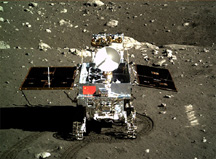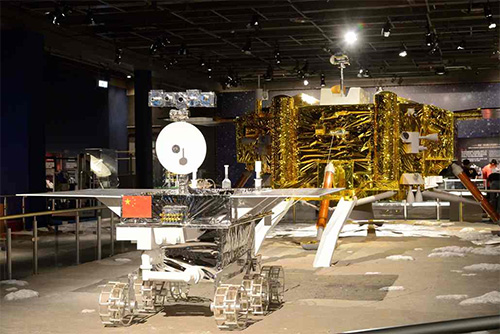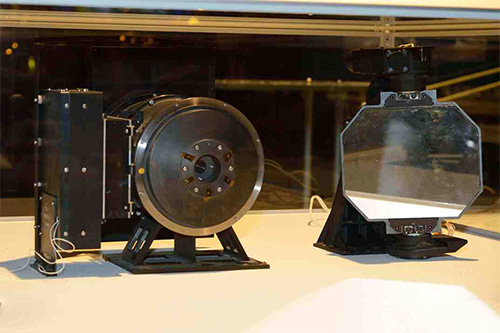Exhibit Highlights
The exhibition occupies an area of 1,500 square metres and grouped into 3 main parts, namely (1) the accomplishments of the Chang'e 1, 2 & 3 missions; (2) introduction of the science knowledge relating to the China's lunar exploration programme and the moon; (3) overview of the local research on space technology in Hong Kong in order to support the lunar exploration. The exhibition features around 20 replicas, models and interactive exhibits, including replicas of the lunar lander, the Yutu Lunar Rover and some scientific instruments for the Chang'e-3 mission, launch vehicles, satellite, model of the launch site, and simulation of the Yutu Lunar Rover, as well as some interactive games. The exhibition is supplemented with graphic panels and video.
(Click here to view an introduction video)


Chang'e-1 was the first lunar probe of China. Since 2007, it had orbited the Moon for one year and four months to acquire 3D images of the lunar globe and obtain data on the distribution of chemical elements on the lunar surface.

Chang’e-1 took images of the entire Moon in 19 orbital flights within one year or more, producing China’s first image of the entire Moon.

Chang’e-1 utilised the interferometer spectrometer imager and CCD stereo camera to acquire the China’s first image of the entire Moon and the spectrum of the lunar surface.

Microwave radiometer of Chang’e-1 detected the microwave radiation emitted by the lunar surface materials; hence the thickness and composition of the lunar regolith can be derived.

The assembly of Chang’e-3 is in progress.


On December 2013, China launched Chang’e-3 into the space by enhanced Long March 3B launch vehicle. The lander achieved a soft landing on the lunar surface and was successfully separated from the Yutu Lunar Rover and captured images of each other.

The Yutu Lunar Rover carries multiple devices for exploring the lunar surfaces with an environment which has no air and is exposed under high radiation, plus an extreme temperature difference.

Jointly developed by The Hong Kong Polytechnic University and China Academy of Space Technology, the “Camera Pointing System”, which is mounted on top of the lander of Chang’e-3, is deployed for capturing panoramic images of the Moon as well as the movement of Yutu Lunar Rover.

Constituted by the main body, a reflector and a detector, the lunar optical telescope of Chang’e-3 lander achieved the first lunar automated astronomical observation and the first Earth-Moon joined observation.

The main duty of Yuanwang 6, a member of aerospace survey or space tracking ships, is to conduct maritime tracking and control of launch vehicles, satellites and probes.








